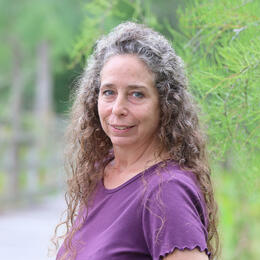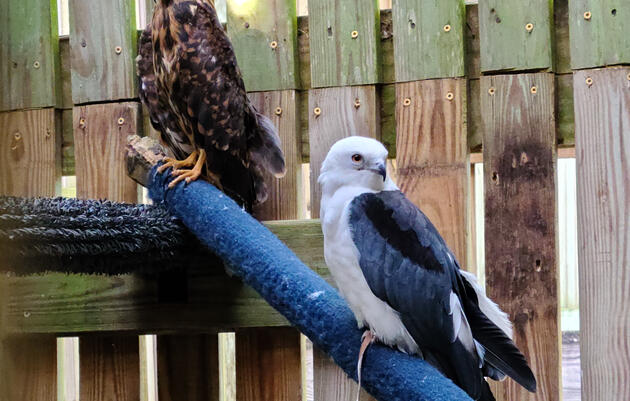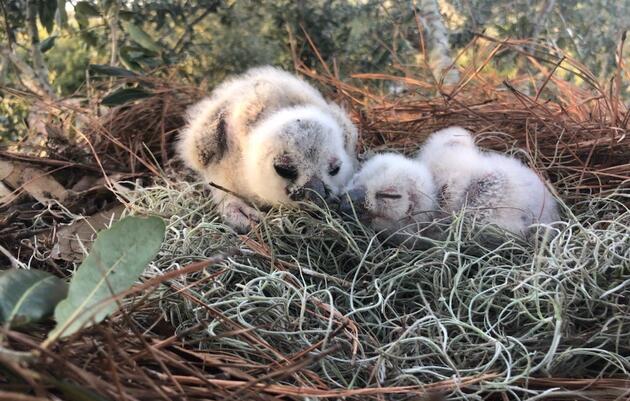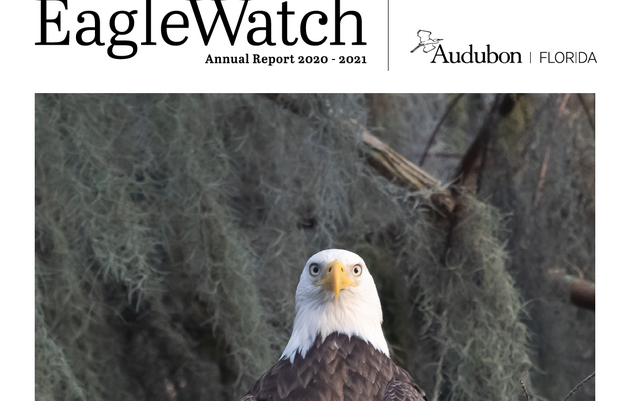Spring has arrived and, while it is a great time for spring cleaning around the yard, it is important to keep an eye out for injured baby raptors. Each spring, hundreds of baby raptors are admitted to the Audubon Center for Birds of Prey’s Raptor Trauma Clinic, where staff and volunteers work diligently to keep up. So far in 2022, the Clinic has admitted more than 260 total birds, with nearly 50% of those patients considered babies, or not yet able to fly. Seventy-seven of the babies admitted had fallen from their nests.
“Baby season’s busiest month is May, so we’re just getting started,” says Samantha Little, CVT, Raptor Conservation Specialist at the Clinic.
Bald Eagle babies started showing up in January, and other species began to arrive as the season progressed, including owls, osprey, and hawk chicks. Each year, baby birds continue coming in through early June. While staff at the center are able to treat broken bones and most other fall-related injuries, it is traumatic for the young birds that become displaced from their families and nests.
The Raptor Trauma Clinic building includes a large examination and treatment area, lab, radiology, ICU, and separate recovery rooms based on species and size of the raptors. Similar to a local veterinary hospital, the Raptor Trauma Clinic has specialized equipment and procedures for treating these unique species, designed to reduce stress on birds and provide a calm environment for recovery.
Audubon’s goal is to return these babies to their families as quickly as possible. This can include renesting, fostering into a wild nest, or providing a basket or platform if the original nest has been destroyed and the parents are still present.
By the end of April, the team had already returned 27 baby birds to their nests.
“Our efforts would not be possible without the help of a tremendous network of volunteers,” says Katie Warner, Center Director. “Thanks to the generosity and kindness of many individuals, we are able to return many of our patients to their nests.”
Some tips for Florida residents:
- Be aware of any raptor nests in your yard or neighborhood, especially during baby season
- Be sure the bird truly needs help before attempting to rescue it - if you have questions call the Center (407-644-0190)
- Refrain from trimming any trees during nesting season, especially between January and June
To help offset the increased costs during baby season, the Audubon Center for Birds of Prey held a Baby Owl Shower on May 7 from 10 am to 12 pm. A community event, Baby Owl Shower offered activities, bird meet and greets, and a raffle to raise funds to support the Raptor Trauma Clinic. Admission that day was free with a gift from the Center’s wish list.
The Audubon Center for Birds of Prey, located in Maitland, Florida, tends to more than 700 injured raptors each year. Through the Center’s rehabilitation programs, the Center has had a direct impact on Florida’s populations of Bald Eagles and other raptors, either through direct rehabilitation or through the offspring of birds treated and released by the Center. Since 1979, our team has released over 650 rehabilitated Bald Eagles back into the wild.










